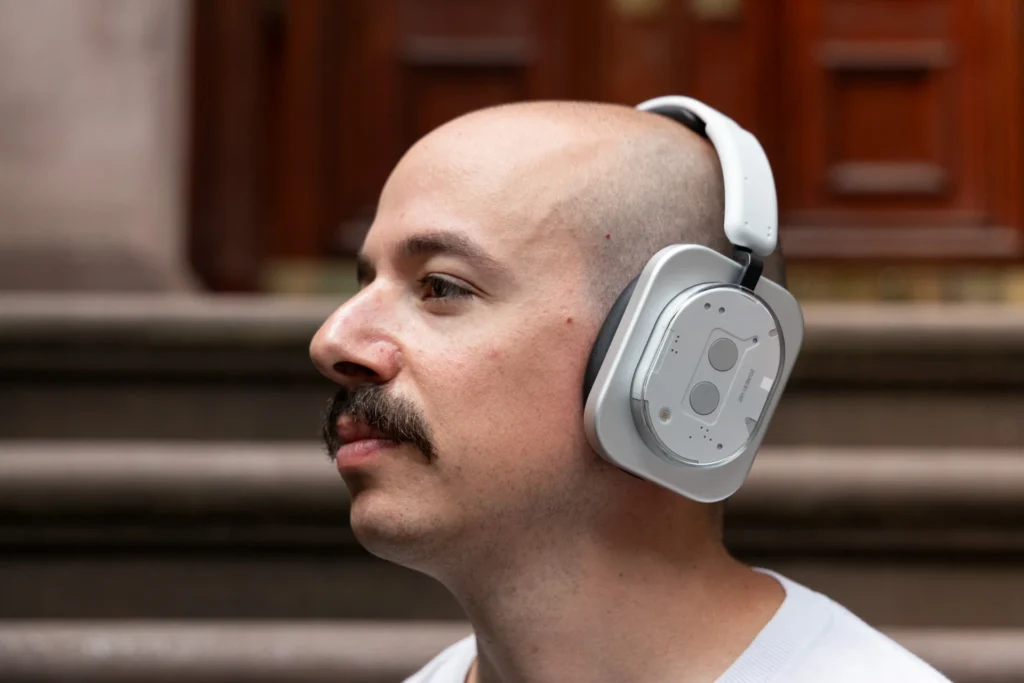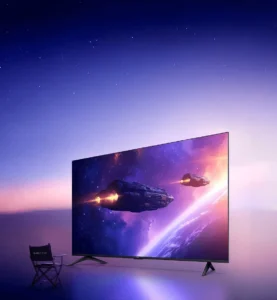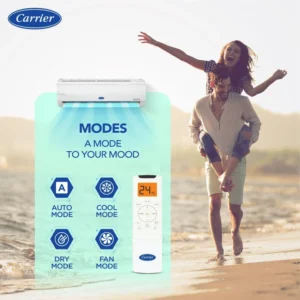Nothing Headphones 1 Review: Style or Substance?
The “Nothing” company, they’ve really carved out a name for themselves as a design focused brand in consumer electronics. They’ve given us some interesting phones and earbuds, always with that distinctive transparent look. Now, they’re stepping into a new arena: over ear, noise canceling headphones. These are priced at about $300, which puts them right into a very competitive space, where giants like Sony, Bose, and Sennheiser usually dominate. The big question, then, is whether Nothing’s unique design is enough to make these headphones stand out, or if they can truly compete on the fundamentals that really matter to audio enthusiasts. Let’s dig in and find out.
| Pros | Cons |
|---|---|
| Distinctive, eye catching transparent design. | Design may be polarizing; not everyone will love it. |
| Excellent physical buttons and controls. | Noise cancellation is good, but not class leading. |
| Very comfortable for long listening sessions. | Transparency mode is functional, but voice sounds “booming.” |
| Solid sound quality for the price. | Do not fold, making them less portable. |
| Good battery life (35 hours). | The included case has an annoying zipper. |
| Feature rich companion app with advanced EQ. | Soundstage is not particularly wide. |
| Can connect to two devices at once. | Partnership with KEF might be more branding than deep collaboration. |
Design and Build: A Bold Statement
First things first, the design. It’s pretty wild. Nothing offers these headphones in both a dark and a light version, and I’ve been spending time with the light one. It really does have this sort of “cassette tapes glued to the side of your head” kind of vibe. You won’t find anything else in the modern headphone world that looks quite like it. Now, that’s a bit of a double edged sword, isn’t it? It’s like the “Cybertruck effect” – some people are going to absolutely love it because it’s different, and others will probably just, well, hate it for the very same reason. I do think these are a bit more elegant than a Cybertruck, though. There’s some subtle text, and that signature red dot, which is actually super handy for always knowing which side is the right ear cup.
Nothing really leans into that transparent aesthetic they’re known for. And while, sure, with headphones, all you’d really see inside are drivers and batteries, I still think they’ve managed to pull it off. It looks neat. Am I crazy for thinking that? Maybe a little. But I have a theory: this slightly unusual design was easier for me to accept because, honestly, the rest of the product, as I’ve been using it, is actually pretty good. It’s like the design is bold, but it’s not just for show.
- Aesthetic: Unique transparent design, available in dark and light versions.
- Polarizing: Design is distinctive, appealing to some, off putting to others.
- Practicality: Red dot indicates right side.
- Overall Impression: Bold design, but supported by solid overall product quality.
Controls: Tactile and Thoughtful
One of the things that really stands out about the Nothing Headphones 1 is their control system. They’ve opted for physical buttons and switches, which, in a world dominated by finicky touch controls, is a breath of fresh air. There are about five different interesting buttons on these headphones, and they’re all tactile.
The top button, for example, is also a slider, a bit like a mouse scroll wheel. It’s smooth, moves back and forth for volume up and down. But you can also press it in once to play or pause your music, and then hold it down to switch between transparency mode and noise cancellation. I don’t love that they still make this creepy sighing sound when they switch modes, but it’s way better than those touch sensitive areas we’ve seen on so many other headphones lately. So, I’m definitely on board with that.
Right below that, there’s a paddle shaped button. It’s large enough and easy to find without even looking. This controls next track and previous track. In certain supported apps, you can even hold it down to fast forward or rewind. I confirmed it works in chunks in Spotify, and it seems to work best with a 2x scrubbing speed in Apple Music.
On the bottom of the right headphone, you’ll find the on or off switch, the USB Type C port for charging, and a 3.5 millimeter headphone jack for wired listening. And then, at the front of the right ear cup, there’s a customization button. By default, a single press triggers your phone’s voice assistant. But in the Nothing app, you can actually customize this button to do other things, which is a nice touch. Finally, on the inside, there’s a subtle but useful Bluetooth pairing button. So, no awkward swiping, just good old fashioned physical buttons. Thumbs up to the control system, I’d say.
- Physical Controls: Features tactile buttons and switches, avoiding finicky touch controls.
- Volume Slider: Top button doubles as a smooth scroll wheel for volume, also play/pause and ANC/transparency toggle.
- Track Control Paddle: Large, easy to find paddle for next/previous track, with fast forward/rewind in supported apps.
- Connectivity Ports: USB Type C for charging, 3.5mm jack for wired audio.
- Customization Button: Programmable button for voice assistant or other functions via the app.
- Bluetooth Pairing: Subtle internal button for easy pairing.
Comfort and Build Quality: Designed for Long Hauls
Beyond the controls, Nothing has hit almost every other build quality fundamental too. These headphones are comfortable. They’re well built. The ear cups are a mix of metal where you grab them, but also plastic to save weight. And the headband is very flexible, designed to fit a variety of head sizes. The ear cups themselves are quite soft. They are a little heavier than your average, completely plastic noise canceling headphones, but not excessively so. They’re certainly not AirPods Max heavy, for example. And they’re still very comfortable to wear for hours on end. I can say that with confidence because I just did. I had about eight hours of flights recently, and I watched tons of videos and listened to music and podcasts, and I was genuinely impressed by how good they feel. They did all that on one charge too.
The battery life is rated at about 35 hours, which is roughly the average for this category of headphones. When I didn’t want to have them on, or when I needed to talk to someone, I could take them off and they actually fold down flat, which is not something all headphones do. However, there is one small miss: these headphones don’t fold *compactly*. So, traveling with them means the case is a little awkwardly bigger than it might need to be. And also, this zipper on the case is kind of annoying. I’m not just saying that because I’ve recently used a perfect magnetic buckle case on another pair of headphones, but this is actually a small, annoying zipper that I’m pretty confident will annoy everyone who uses it. It’s a little thing, but it’s there. Aside from that, though, as far as comfort and fundamentals for headphones go, they’ve done a great job here.
- Comfort: Well built and comfortable for extended wear, with soft ear cups and flexible headband.
- Weight: Slightly heavier than all plastic ANC headphones, but not excessively so.
- Battery Life: Rated at approximately 35 hours, which is average for the category.
- Portability: Ear cups fold flat, but the headphones do not fold compactly, leading to a larger case.
- Case Issue: The included case has a small, potentially annoying zipper.
Sound and Noise Cancellation: A Solid Performer
So then, what about the sound? If you’re buying these for the audio quality, I think you could do a lot worse. First of all, the ear cups, the pads here, are very soft but also very thick. So, when you put these on, the passive isolation from your environment, even without active noise cancellation (ANC) turned on, is really good. Then, when you do turn ANC on, it does a great job with room noise and general white noise. Turn the music up, and that’s all you’re really going to be hearing. I will say, on the extreme end, it’s about a notch and a half behind the very best ANC out there. I could still hear some plane engine noise on my flights, where I’d never hear that through some top tier competitors. But it’s definitely not a deal breaker. If those top tier options are an A+, these are probably a B+.
Transparency mode is a different beast, though. Some headphones have really nailed that, making it feel almost natural to hear your environment. These, I’d say, kind of fall in with the rest of the pack. Functionally, they’re fine. I can hear my environment, and if people talk to me, I can hear them. But my own voice, maybe there aren’t enough microphones inside, but my own voice sounds super booming. It’s just not comfortable to have a conversation with these on, so I ended up just taking them off.
Honestly, I don’t think people are going to buy these just for the sound. Nothing is, after all, a design company. But the sound, which is “Sound by KEF” and delivered through 40 millimeter drivers, does perfectly fine thanks to all that passive isolation. They’re clear, they’re balanced, with plenty of range all the way from bass through mids and highs, without distortion at high volumes. The soundstage isn’t particularly wide, but some people might actually like that isolated, small room feeling. And, crucially, you can dial in the sound characteristics you really like with the companion app.
- Passive Isolation: Very good due to soft, thick ear cups.
- Active Noise Cancellation (ANC): Effective for room noise and white noise, but not class leading (rated B+ compared to A+ for top competitors).
- Transparency Mode: Functional for hearing environment, but own voice sounds “booming,” making conversations uncomfortable.
- Sound Quality: Clear, balanced, good range from bass to highs, no distortion at high volumes.
- Soundstage: Not particularly wide, may appeal to those who prefer an “isolated” sound.
- Drivers: Features 40 millimeter drivers.
- KEF Partnership: “Sound by KEF” branding, though the actual extent of collaboration is not fully clear.
The Companion App: Customization at Your Fingertips
Let me just give a shout out to the companion app for these headphones. This is where you can do a ton of stuff, and it’s quite well featured. You can change exactly what that customizable button does, with options for a single press or a press and hold. You can also quickly manage which devices the headphones are connected to. And yes, they can be connected to two devices at once, which is super convenient for switching between your phone and your laptop, for instance.
You can also change the level of noise cancellation from low to medium to high, giving you some control over how much of the outside world you want to block out. And for the audiophiles out there, you can pick from a few pre tuned equalizers, or, if you’re feeling adventurous, go into the advanced one and literally drag the sliders around to make your own custom preset. There is a lot of range here. You can really mess up the sound if you want to, or dial in something nice and subtle that perfectly suits your preferences. It might come as a surprise to some people, but these actually sound like $300 headphones.
- Customizable Button: App allows remapping of the physical customization button.
- Multi Device Connectivity: Can connect to two devices simultaneously.
- ANC Levels: Adjustable noise cancellation (low, medium, high).
- Equalizer (EQ): Offers pre tuned equalizers and an advanced custom equalizer for detailed sound tuning.
- Overall App Quality: Feature rich and provides good control over headphone settings.
Who Should Buy the Nothing Headphones 1? (And Who Shouldn’t)
So, can you get better headphones than these? Yeah, of course. The top tier headphones, like some of Sony’s offerings, are still objectively better at almost everything. Better ANC, better sound quality. They might even fold more compactly and have a better case. But are they $150 better? That’s really up to you. Some people might genuinely prefer the actual physical switches and buttons on these Nothing headphones over the touch controls on others. Some people might prefer this distinctive design. And, perhaps most importantly, some people are going to prefer the money saved. That’s where these headphones really come in. They offer a solid package at a competitive price.
Who Should Consider Buying It:
- Design Enthusiasts: If you love Nothing’s unique transparent aesthetic and want headphones that truly stand out from the crowd.
- Fans of Physical Controls: If you prefer tactile buttons and switches over touch sensitive controls for managing your audio and calls.
- Comfort Seekers: If you need headphones that are comfortable for hours of continuous wear, even during long commutes or flights.
- Value Conscious Buyers: If you’re looking for a rock solid pair of noise canceling headphones with good sound and battery life for around $300, and don’t need the absolute top tier performance.
- Multi Device Users: The ability to connect to two devices at once is a convenient feature for those who switch between a phone and a laptop often.
Who Might Want to Look Elsewhere:
- Absolute ANC Perfectionists: If you demand the very best noise cancellation available, especially for blocking out loud, consistent noises like plane engines.
- Transparency Mode Dependents: If you frequently use transparency mode for conversations and need a natural sounding experience without your own voice sounding “booming.”
- Extreme Portability Needs: If folding compactness and a super small case are critical for your travel style.
- Pure Audio Purists: While the sound is good, if you’re an audiophile seeking the widest soundstage or the most nuanced audio reproduction, you might find more specialized headphones.
Key Takeaways and Summary
The Nothing Headphones 1 represent the company’s first foray into over ear, noise canceling headphones, bringing their signature design philosophy to a new product category. Priced at $300, they aim to compete in a crowded market by emphasizing a unique aesthetic and user experience.
The design is certainly distinctive with its transparent elements, though it may not appeal to everyone. A major highlight is the implementation of physical, tactile controls, which offer a refreshing change from often finicky touch interfaces. The headphones are also notably comfortable for extended wear and offer a good 35 hours of battery life, with convenient USB C charging.
In terms of audio performance, the “Sound by KEF” and 40 millimeter drivers deliver clear, balanced sound, complemented by very good passive isolation. The active noise cancellation is solid, performing well against general ambient noise, though it doesn’t quite match the industry leaders. The transparency mode is functional but has room for improvement in how it handles your own voice. The companion app is robust, offering detailed customization for controls and a versatile equalizer.
Ultimately, the Nothing Headphones 1 are a strong contender in their price range, particularly for those who prioritize unique design, excellent physical controls, comfort, and solid all around performance. While they may not dethrone the absolute best in noise cancellation or offer the most compact folding design, they present a compelling package for a specific type of user who values style and thoughtful functionality.





